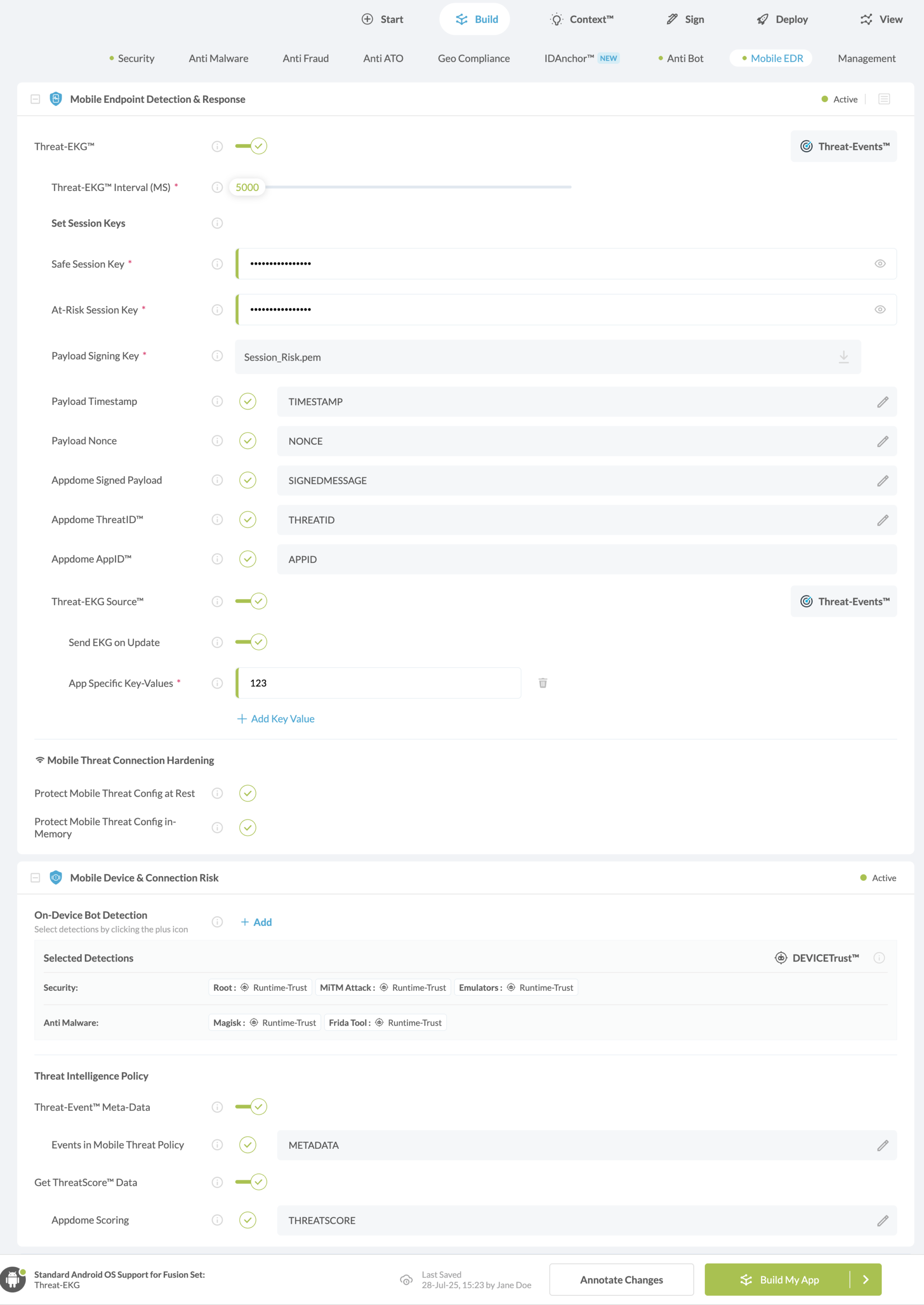How to Use Threat-EKG with Appdome's Mobile EDR
What is Threat-EKG?
Threat-EKG™ offers real-time monitoring and protection for applications on wearable and mobile devices, ensuring secure communications even without a traditional network connection. By utilizing threat events, Threat-EKG™ provides regular updates on the device’s health status to support secure operations.
How Does Threat-EKG Protect Mobile Enterprise Apps & Wearable Devices
Threat-EKG™ establishes a comprehensive security framework for both wearable and mobile devices, ensuring their communication with mobile apps and servers remains secure by enforcing mobile threat detection and defense data across the entire enterprise infrastructure, including the mobile app, server, IAM, UEM, or WAF.
Here’s how it functions:
Payload Generation: Threat-EKG sends payloads containing critical information about the wearable or mobile device’s status, including risk session status, safe session status, payload timestamp, nonce, Appdome Signed Payload, Appdome ThreatID™, and Appdome AppID™.
Secure Transmission: These payloads are transmitted securely across various mediums, ensuring secure communication between wearables and mobile devices, even in the absence of traditional network connections.
Threat Events: Threat-EKG facilitates communication to the server through Threat-Events sent from Appdome to the mobile app, updating the mobile or wearable device health status and alerting the mobile app to potential threats.
For further information on Threat Events, please refer to the knowledge base article: Threat-Events™, In-App Threat Intelligence in Mobile Apps
Data Encryption: In secure sessions, Threat-EKG encrypts the payloads, ensuring that sensitive information, such as the app’s health data, cannot be intercepted by attackers. This protects both the wearable and the connected mobile app from unauthorized access.
Prerequisites for Using Threat-EKG:
To use Appdome’s mobile app security build system to Enforce Threat-EKG, you’ll need:
- Appdome account (create a free Appdome account here)
- A license for Threat-EKG
- Mobile App (.ipa for iOS, or .apk or .aab for Android)
- Signing Credentials (see Signing Secure Android apps and Signing Secure iOS apps)
Overview of Appdome Mobile Endpoint Detection & Response Features

In addition, Threat-EKG includes an optional Mobile Device & Connection Risk assessment for several different threat types.
All Mobile Device & Connection Risk features include the option to set DEVICETrust™ levels.
To learn more about DEVICETrust™, please refer to this knowledge base article:
How to use DEVICETrust™ with MobileBOT™ Defense
Related Articles:
- How to use MobileBOT Source™ with Mobile Bot Defense
- How to Use Session Headers in Mobile Bot Defense
- How to Use Payload Timestamps In Mobile Bot Defense
- How to use Appdome Mobile EDR
If you have any questions, please send them our way at support.appdome.com or via the chat window on the Appdome platform.
Thank you!
Thanks for visiting Appdome! Our mission is to secure every app on the planet by making mobile app security easy. We hope we’re living up to the mission with your project. If you don’t already have an account, you can sign up for free.
